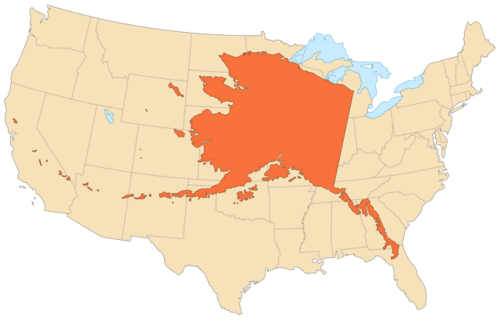St. Jude Family of Websites
Explore our cutting edge research, world-class patient care, career opportunities and more.
St. Jude Children's Research Hospital Home

- Fundraising
St. Jude Family of Websites
Explore our cutting edge research, world-class patient care, career opportunities and more.
St. Jude Children's Research Hospital Home

- Fundraising
Improving HPV Vaccination Coverage in The Last Frontier Takes a Community-Centered Approach
September 2024
By Jessica Quinn, MS, State of Alaska Department of Health

Jessica Quinn, MS is a Public Health Specialist at the State of Alaska Department of Health. She has been Program Director for the Alaska Comprehensive Cancer Control Program for over six years and as part of that role manages the statewide cancer coalition, the Alaska Cancer Partnership.
In a state without Accountable Care Organizations (ACOs), Managed Care Organizations (MCOs), large health systems, or academic medical research centers, many of Alaska’s public health campaigns start and grow through grassroots partnerships and community connections. For over 10 years, the state’s cancer coalition, the Alaska Cancer Partnership, has been convening public health programs, nonprofits, health centers, and advocates to work together for greater reach in efforts to improve HPV vaccination rates across the state.
In 2020, we launched a campaign, Alaska HPV Vaccination Month, to highlight this issue each year. Coalition members worked tirelessly in the months leading up to this campaign to reach and recruit pediatric and primary care clinics to participate as campaign partners by selecting an evidence-based or promising practice to implement in their community to increase HPV vaccination coverage. Activities included creating standing orders in the electronic health record, implementing a client reminder system, developing a clinic policy to start recommending the vaccine at age 9, and many others. The coalition provides tailored resources and support to campaign partner clinics so that they can customize how to reach their community based on capacity and experience.
The coalition identified that HPV vaccination coverage rates were significantly lower among youth living in the rural parts of the state and therefore focused its efforts on recruiting federally qualified health centers (FQHCs), which are often the only source of health care in these areas.

Map of Alaska's area compared to the lower 48 U.S. states. (Image from Wikimedia)
The Alaska Native Tribal Health Consortium has been a strong partner in Alaska HPV Vaccination Month and has modeled success in the community-centered approach through their village-based Community Health Aide Program, which has sustained much higher vaccination coverage rates for Alaska Native People compared to their non-Alaska Native counterparts. That model has underscored the importance of encouraging campaign partner clinics to take the lead in identifying which strategies would work best in their own town or village and having the coalition serve as a support and resource hub.
By offering options, we empower clinics to create their own version of the campaign and build partnerships in their community that will be sustained. One tribal health campaign partner stated, “The HPV Vaccination Month campaign provided many useful tools, inspiring our program to focus on raising HPV vaccine awareness in our community. The vaccine reminder cards and online webinar for continuing education enabled us to collaborate with our physicians and nursing staff for additional promotion in the primary care clinic.”
August 2024 is Alaska’s fourth annual HPV Vaccination Month. Through personal contacts, email outreach, and good old-fashioned phone calls, the work of the coalition partners has paid off year over year by surpassing recruitment goals and showing gains in HPV vaccination coverage among participating clinics. The success of this initiative is credited to the community-centered approach, which is vital in a state that values independence and pluck.